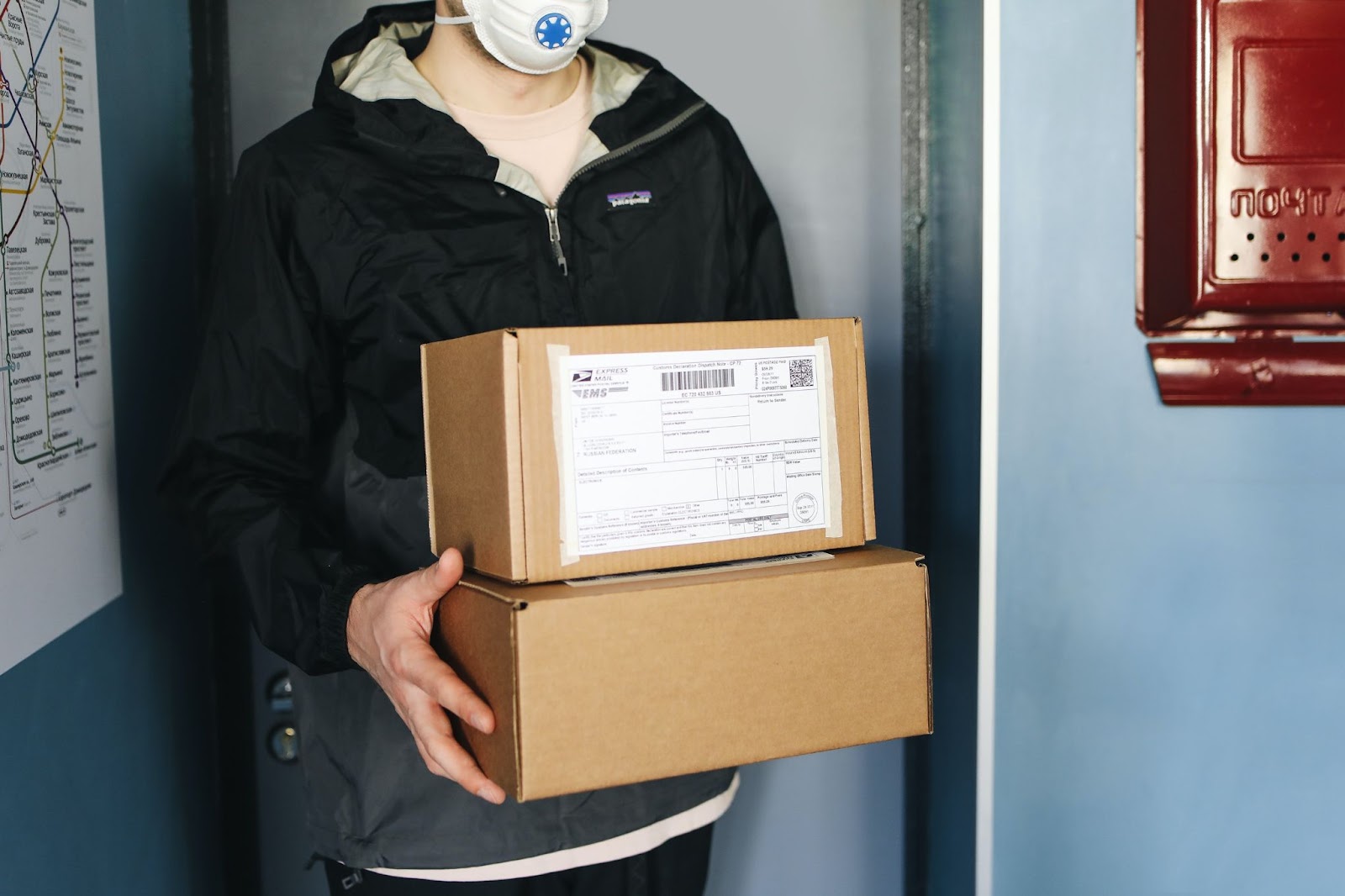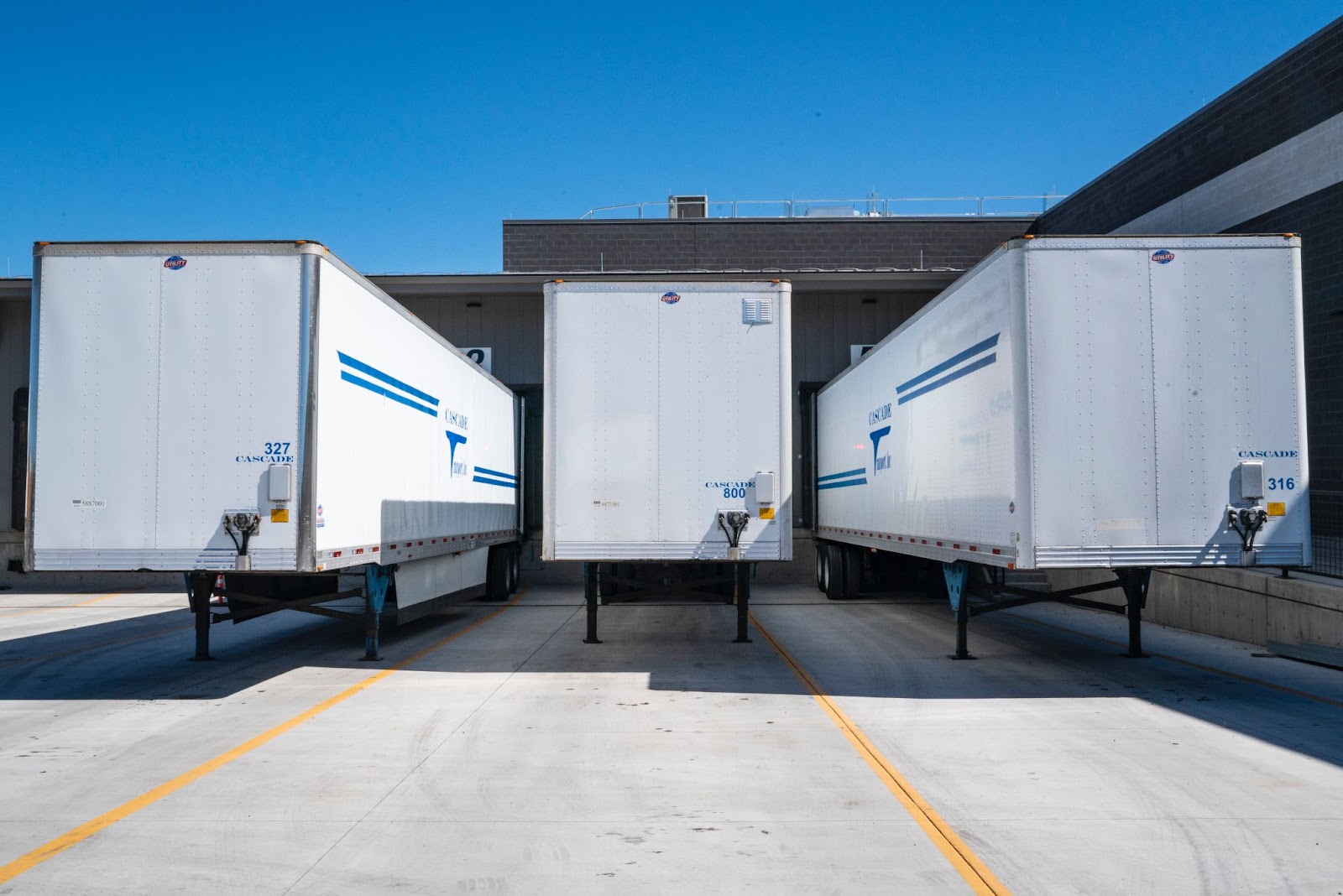Suggerimenti per la logistica e le consegne dell'ultimo miglio
Cos'è la consegna dell'ultimo miglio? Come funziona? Clicca per scoprire i consigli per la consegna dell'ultimo miglio e le sfide e le ottimizzazioni della logistica.
.png)
La consegna dell'ultimo miglio consiste nel trasporto dell'articolo dal Centro di evasione al cliente e la domanda di questo servizio è in forte crescita.
Il processo di consegna dell'ultimo miglio rappresenta più del cinquanta per cento del costo di spedizione di un prodotto.
Il costo, tuttavia, può avere un impatto negativo sulla redditività delle aziende di e-commerce e rappresenta una grande opportunità per risparmiare sui costi.
Si stima che il valore della consegna in giornata e della logistica dell'ultimo miglio nel solo Nord America raggiungerà oltre 50 miliardi di dollari entro il 2022. Anche le aspettative dei clienti in termini di comunicazione, tracciabilità degli ordini e tempi di consegna sono in aumento.
Indipendentemente dalla tua strategia di fulfillment, non puoi negare l'importanza di ottimizzare la logistica delle consegne dell'ultimo miglio.
Per ottimizzare l'ultimo passaggio dal centro di distribuzione o dallo stabilimento al cliente, è fondamentale capire bene come funziona e perché è così importante.
Cos'è la consegna dell'ultimo miglio?
Per consegna dell'ultimo miglio si intende il trasporto di un pacco da un Centro di evasione alla destinazione finale. La destinazione finale del pacco può essere la porta di casa del cliente o un negozio al dettaglio.
Un Corriere, Corrieri dell'ultimo miglio Corriere, Corrieri ha l'obiettivo di consegnare l'articolo alla destinazione finale nel modo più economico e veloce possibile. Molti corrieri dell'ultimo miglio dispongono di una flotta di veicoli per la consegna dei prodotti.
L'ultimo miglio è una delle fasi più critiche del processo di consegna, soprattutto se i trasportatori vogliono tenere il passo con la crescente domanda di spedizioni veloci da parte dei consumatori.
Questa è la parte più costosa del viaggio ed è fondamentale perché i clienti possono facilmente scegliere altri prodotti se la spedizione non soddisfa le loro esigenze. I centri di smistamento, i costi della flotta, l'ottimizzazione dei percorsi e i costi della manodopera possono essere considerevoli e far lievitare i costi.
C'è un modo per evitare che i clienti si facciano carico dei costi di consegna dell'ultimo miglio, ovvero che le aziende si facciano carico dei costi stessi. Alcune stabiliscono limiti d'ordine specifici per compensare questo costo.
Come funziona la consegna dell'ultimo miglio?
Il processo di consegna dell'ultimo miglio inizia dopo che il cliente effettua un ordine confermato con il fornitore di e-commerce o il rivenditore online e lo paga.
Il processo tipico prevede le seguenti fasi.
Passaggio #1
In questa fase gli ordini entrano nel sistema centralizzato del fornitore di e-commerce o del rivenditore in modo digitale. In questa fase, il mittente e il destinatario possono monitorare lo stato delle richieste e degli ordini grazie a un numero di tracking.
Passaggio #2
L'ordine arriva all'hub di trasporto in attesa di essere ritirato per essere consegnato alla destinazione finale.
In questo caso la velocità e l'efficienza sono fondamentali per garantire che l'ordine arrivi dall'hub di trasporto alla destinazione finale il più velocemente possibile.
Passaggio #3
Gli ordini vengono assegnati ai corrieri in base all'indirizzo e ai percorsi. Il processo di smistamento e assegnazione degli ordini e dei pacchi deve essere strategico.
Questo è essenziale se le aziende vogliono ottimizzare le soluzioni logistiche di consegna dell'ultimo miglio in modo efficiente dal punto di vista dei costi.
Fase #4
Gli ordini vengono scansionati prima di essere caricati sui veicoli di consegna. Lo stato di tracciabilità dell'ordine viene aggiornato per il mittente e il destinatario. Questa fase riduce anche il rischio di perdere i pacchi in transito.
Passo #5
Infine, l'ordine arriva a destinazione. Il destinatario finale riceve il pacco e il personale addetto alla consegna aggiorna le informazioni di tracciamento per confermare che la consegna è stata completata. La prova di consegna è ora disponibile.
Questi passaggi sembrano abbastanza semplici, ma la consegna dell'ultimo miglio può presentare delle complicazioni. Le numerose parti mobili dell'ecosistema di consegna dell'ultimo miglio e la qualità del processo dipendono da fattori esterni e interni.
Le aziende si rivolgono alle moderne soluzioni di consegna dell'ultimo miglio per garantire un'esecuzione senza interruzioni.

Perché la consegna dell'ultimo miglio è importante?
È fondamentale avere un'attività di consegna dell'ultimo miglio super efficiente ed economica Modello, Modelli per la sua importanza nel raggiungere la soddisfazione dei clienti e nel fidelizzarli.
I clienti che non ricevono le consegne con la rapidità desiderata possono rivolgersi a un negozio della concorrenza che consegna più velocemente.
Oggi la spedizione in due giorni è considerata la norma. Questo è in parte dovuto al fatto che Amazon offre la sua avanzata tecnologia di consegna dell'ultimo miglio. È anche considerato normale commercializzare la spedizione gratuita e veloce come parte della strategia di marketing incentrata sul cliente per le aziende di e-commerce.
La consegna è un punto di contatto fondamentale tra il tuo Marchio, Marchi e il cliente, per cui il processo dell'ultimo miglio è estremamente importante. Ha un impatto enorme sull'esperienza dei tuoi clienti, sulla percezione del tuo Marchio, Marchi, in ultima analisi, sulla tua redditività.
Qual è la sfida dell'ultimo miglio?
In breve, la sfida della consegna dell'ultimo miglio è l'equilibrio tra esperienza del cliente e costi.
Per offrire ai clienti un'esperienza di consegna memorabile e piacevole nell'ultimo miglio, i marchi di e-commerce devono affrontare diverse sfide come i costi di spedizione, la velocità di evasione degli ordini e la loro tracciabilità.
Per competere nello stesso mercato di giganti della vendita al dettaglio come Amazon, i commercianti devono fare investimenti sostanziali in infrastrutture, tecnologia e personale. Queste infrastrutture permetteranno loro di spedire gli ordini in tempi rapidi per soddisfare i clienti. I costi di investimento possono essere ingenti e la manutenzione può aumentare, riducendo i margini di profitto lordo.
Se da un lato i clienti preferiscono le spedizioni veloci e gratuite, dall'altro le aziende di e-commerce spesso ritengono che la consegna dell'ultimo miglio sia la parte del processo di spedizione più dispendiosa in termini di tempo e denaro. Infatti,fino al 53% del costo totale della spedizione è dovuto alla spedizione dell'ultimo miglio e circa il 25% deve essere pagato dall'azienda per l'efficienza della consegna. Il resto del costo è costituito dal pagamento delle varie richieste e dei margini dei clienti.
Le operazioni di consegna dell'ultimo miglio presentano numerose sfide che le rendono molto costose. Queste sfide includono:
- Visibilità limitata
- Garantire una consegna puntuale
- Ottimizzazione del percorso
- Installazione
- Assemblaggio
- La necessità di disfare abilmente le valigie
È importante comprendere queste sfide per garantire che l'ottimizzazione dei costi non avvenga a scapito dell'efficienza durante l'ottimizzazione del processo di consegna dell'ultimo miglio.
Visibilità limitata
La sfida nasce soprattutto dal fatto che il sistema di gestione degli ordini non è collegato al sistema dei fornitori di servizi di consegna o ai sistemi di navigazione dei veicoli e di tracciamento delle consegne.
Questo rende impossibile per il responsabile della logistica tracciare o rintracciare un veicolo in un momento specifico o vedere lo stato degli articoli in tempo reale.
La scarsa visibilità logistica, a sua volta, crea una serie di altri problemi come ritardi, proiezioni imprecise dei tempi di consegna, deviazioni di percorso, consumo di carburante extra e non fornisce ai clienti chiarezza sulle consegne previste.
Garantire una consegna puntuale
Molti clienti sono disposti a pagare un extra per avere consegne più veloci e puntuali. La sfida consiste nel tenere il passo con le consegne dell'ultimo miglio per soddisfare queste aspettative.
Questa ulteriore pressione per una consegna puntuale comporta anche problemi di capacità dei veicoli, in quanto diventa meno facile utilizzarne l'intero spazio. Le consegne programmate sono solitamente per pacchi più piccoli e la data di consegna è predeterminata.
Pertanto, non c'è la possibilità di aspettare altri ordini. Questa pressione temporale può aumentare i costi e rallentare i tempi di consegna, poiché i camion non sono abituati alla loro capacità e devono fare più viaggi.
Ottimizzazione del percorso
La pianificazione tradizionale dei percorsi utilizza processi di calcolo manuali ed è difficile incorporare tutti i fattori che influenzano la produttività dei percorsi. Questi fattori includono il traffico intenso, le severe norme di parcheggio, le aree congestionate, le chiusure improvvise delle strade, le deviazioni accidentali e le strade strette, soprattutto nelle aree urbane.
Inoltre, le ricerche condotte in Cina e negli Stati Uniti indicano che i consumatori preferiscono che la consegna sia a zero emissioni. L'ottimizzazione del percorso e la tracciabilità creano un'opportunità per commercializzare questa opzione di consegna.
Installazione, assemblaggio e disimballaggio a regola d'arte
Molti articoli richiedono un abile disimballaggio e vari gradi di montaggio alla consegna. Alcuni richiedono addirittura l'intervento di tecnici specializzati per la loro installazione.
Ciò rappresenta una sfida per garantire che il prodotto che il cliente utilizza sia proprio come il commerciante lo ha venduto e promesso.
Le sfide che le aziende di consegna dell'ultimo miglio si trovano ad affrontare sono molte e comprenderle ci permette di dare uno sguardo alla creazione di potenziali soluzioni.

Come superare le sfide della consegna dell'ultimo miglio
Esistono alcune soluzioni ai problemi posti dalla consegna dell'ultimo miglio. Questi sistemi permettono alle aziende di logistica di raggiungere l'efficienza e di ottimizzare il processo di consegna.
Alcune di queste efficienze includono:
Ottimizzazione del percorso di consegna dell'ultimo miglio
Il processo di ottimizzazione del percorso di consegna dell'ultimo miglio prevede l'individuazione del modo più efficiente in termini di tempo e di costi per gestire le consegne.
Il sistema elimina gli elementi manuali dal routing dinamico e include automaticamente fattori di ottimizzazione come l'urgenza, la congestione del traffico, le condizioni meteorologiche e le finestre a senso unico. Inoltre, prevede i tempi di consegna.
Il sistema invia avvisi via SMS in tempo reale nel caso in cui si verifichino deviazioni inutili, soste prolungate e veicoli al minimo per attivare un nuovo itinerario. Questo aumenta la produttività del percorso, la capacità dei veicoli e riduce il consumo di carburante e i tempi di consegna.
Una corretta pianificazione del percorso che tenga conto di tutte le variabili può garantire che i prodotti raggiungano i clienti in tempo e nel modo più conveniente possibile.
Spedizione automatica
Una soluzione per le consegne dell'ultimo miglio è una categoria di strumenti software in grado di pianificare il percorso e di assegnare il numero di consegne per autista. Questo riduce le inefficienze e mantiene i costi dell'ultimo miglio il più bassi possibile.
La funzione di automazione del dispaccio consente di risparmiare tempo e costi e di ottimizzare la quantità di autisti necessari.
Controllo end-to-end con il software di gestione delle consegne
L'utilizzo di un software per la gestione delle consegne dell'ultimo miglio ti dà visibilità dal momento in cui il cliente effettua l'ordine e in ogni fase del processo successivo.
La posizione dei veicoli è tracciata in tempo reale e i clienti possono ricevere tempi di consegna precisi. Questo livello di controllo riduce anche le probabilità di consegne non andate a buon fine e le chiamate dei clienti per query posizione del pacco.
Prova di consegna
La prova di consegna è fondamentale per una maggiore trasparenza dell'intero sistema dei servizi dell'ultimo miglio e deve essere a misura di cliente. Ultimamente, questo passaggio è integrato con un'app per dispositivi mobili per garantire facilità d'uso e aggiornamenti immediati.
Le prove di consegna online riducono gli errori manuali, aiutano ad archiviare i dati, facilitano la verifica dei processi e analizzano il feedback dei clienti.
Migliorare l'esperienza del cliente
Concentrarsi sull'esperienza del cliente è fondamentale per competere in un mercato altamente competitivo.
I clienti vogliono trasparenza e piena visibilità sullo stato dei loro ordini. Vogliono poter comunicare facilmente e liberamente, anche con l'autista se necessario. Offri ai clienti vari formati, come le notifiche via SMS.
Per quanto il controllo e i costi siano fondamentali per l'azienda, questi elementi devono essere progettati tenendo conto dell'esperienza del cliente. Assicurati di capire e risolvere i punti dolenti dei tuoi clienti per farli tornare.

Consegna semplificata con Hive
Hive si occupa della realizzazione dell'e-commerce dei marchi D2C come cervello operativo, in modo che i commercianti possano concentrarsi su altri aspetti della loro attività, come la vendita.
Hive offre una soluzione semplice e altamente efficace per le consegne. Ci occupiamo di collegare, immagazzinare, imballare e consegnare per soddisfare tutte le esigenze dei commercianti e dei clienti e far crescere la loro attività.
La nostra soluzione olistica garantisce un processo senza soluzione di continuità attraverso i canali, i confini e i servizi, dall'approvvigionamento ai resi. Offriamo l'esperienza che il commerciante e il cliente finale, clienti finali desiderano ad un prezzo accessibile.
Ti sembra interessante? Richiedi subito un preventivo.










